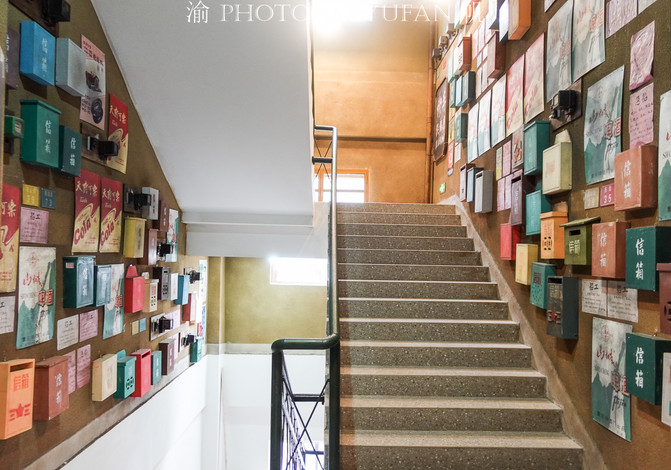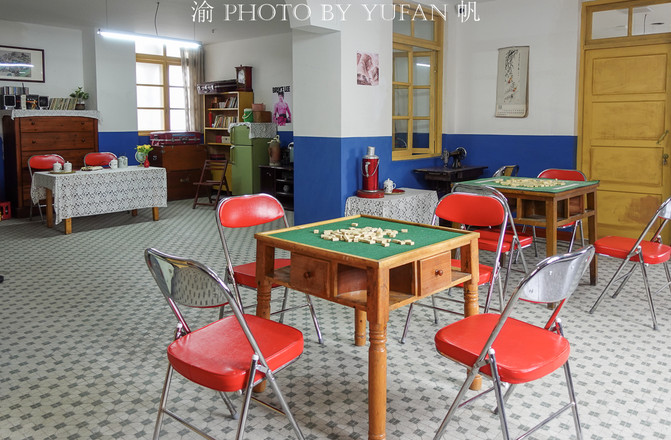Experiencing travel in Chongqing, people born in the 60s and 90s can instantly regain their childhood memories. Nanchuan Old Street is really interesting

When it comes to Nanchuan, people will first think of the famous Jinfo Mountain. Indeed, Jinfo Mountain is not only a national AAAAA tourist attraction, but also a world natural heritage site. It is definitely Nanchuan's well-deserved leading IP. It can be said that you have never been to Jinfo Mountain. It is not considered that you have actually been to Nanchuan, but is Nanchuan only the Jinfo Mountain? That's definitely not the case. In fact, in addition to Jinfo Mountain, Nanchuan actually has many good places, such as Shenlong Gorge, Shanwangping, Nanzhu Mountain, etc., and of course, East Street, which this article will introduce to you.

According to relevant information, Nanchuan is a thousand-year-old county. It has been established for more than 1300 years. It has a long history and extremely rich culture. However, it is difficult for us to touch what Nanchuan looked like a thousand years ago, but in modern times, we can recall it, because Nanchuan City Investment and China Youth Travel Service jointly invested 2.3 billion yuan to build a 120-acre cultural and tourism comprehensive town, highly restoring its historical appearance in the 1970s and 1980s.

It is understood that East Street, as a carrier carrying the imprint of youth life in the town, cleverly integrates the life of Nanchuan people and the landscape wonders, herbal culture, plant ecology and other characteristics on Jinfo Mountain, and develops multiple thematic creative formats. It allows people to better experience Nanchuan's local characteristic culture during the recreational process of East Street.

Nanchuan East Street uses modern technology to fully restore the town's streetscape in the 1980s and 1990s. It is a street paved with bluestone and a storefront decorated with wooden boards. People are leisurely trading needles and needles. On the stone bench in front of the door, the old man dressed in blue cloth is smoking dirt smoke, which is very stylish! These scenes can easily awaken the inner nostalgic emotions of people of all ages, allowing people to gain a sense of experience and identity in cultural life and memory.

Walking along East Street, what impressed me the most was the family memory museum inside. This family memory museum covers an area of four floors. The first floor represents an era, from the 1960s, 1970s and 1980s until the 1980s and 1990s.

For example, this family hall from the 1960s and 1970s, with simple furniture, old kettles, porcelain bowls, sewing machines, etc., is like traveling through time.

Coming out of the family memory library in the 1960s and 1970s, I walked through an old corridor full of pickets, mailboxes, newspaper boxes, and some advertisements from that year were posted. On the next floor, I saw the scene from the 1970s and 1970s.

The first thing that attracted us was the pictorial on the wall, all of which were Hong Kong and Taiwan stars from that time. Come and take a look, do you all recognize them? It is estimated that friends who lived in those days would not be unfamiliar to these pickets, right? In those days, who had not posted a few similar pickets?

Back then, there were no mobile phones, and people's communication required writing letters or making phone calls. Therefore, public phones (or 200 calls using phone cards) have also been remembered by many people. At that time, transferring money was also called remittance, which was not as convenient as online payment today.

In the 1970s and 1980s, as people's economic income continued to improve, people's living standards also made great progress. Some musical instruments slowly began to enter ordinary households, such as organ, accordion, guitar, etc., became a hobby of many people.

This is the appearance of many ordinary families at that time. Enamel washbasins, wooden washstands, temporary kitchens placed in the corridor, and old-fashioned washing machines are slowly entering ordinary people's homes.

Moreover, people's interests and hobbies were becoming more and more extensive at that time. Some cultural people began to love traditional Chinese culture, and they began to set up study rooms at home. Several calligraphy and paintings were hung on the wall as standard. In the middle of the study room was a large book table for practicing calligraphy, which looked very literary and artistic.

At that time, furniture and electrical appliances in the home gradually increased, black and white televisions began to enter the homes of ordinary people, and TV dramas such as "Huo Yuanjia" were strongly sought after.


Comic strips were also very popular at that time. Comic strips, also known as comic strips, comic books, etc., were an ancient traditional Chinese book. It is said that they slowly took shape after the popularization of printing in the Song Dynasty. Telling stories and portraying characters with continuous pictures has a wide range of themes and diverse contents. It is a popular reading suitable for all ages.


For friends born in the 1970s and 1980s, comics definitely have deep memories."The Wandering Story of Sanmao","The Red Scouts of Women","The White-Haired Girl","Harbor","Shajiabang","The Story of the Red Lantern","Surprise Assault on the White Tigers","Taking Tiger Mountain with Wisdom","Ode to Longjiang","Divine Legs Du Xinwu","Chen Zhen","The Adventures of Tintin"... are all very familiar to everyone.

Going further, it was the 1980s and 1990s. At that time, people's living standards had been further improved compared with the 1970s and 1980s. For example, people paid more attention to entertainment life after work. The Chongqing area where Nanchuan is located began to popular. The first generation of mahjong, although it does not seem as big as today's mahjong, still everyone had fun and enjoyed it.

Here, in addition to seeing family scenes from different eras, you can also see scenes from some special shops, such as the tailor's shop pictured above. On one side, ready-made garments are hung, on the other side, and on the large platform in the middle There are various patterns, needle threads, and an old-fashioned sewing machine is placed on the side.

This is the scene of the canteen at that time. Shancheng Beer, Tianfu Coke, Hongyan Ink, Shuxiu Washing Powder, Shancheng Watch, 100-year-old hair, Hechuan Match, Rice Flower Candy... all were old brands in Chongqing at that time, and many of them have disappeared now. Only Shancheng Beer is still the original brand, but it has also been sold to Carlsberg. When Tianfu Coke was most popular, it had a packaging factory nationwide for 108 years. Later, it was a joint venture with Pepsi Cola and was brutally hidden, making a generation of famous drinks history. Although the brand has now been restored through complaints and other means, its influence is no longer the same.


This family memory museum can allow almost every tourist to find childhood memories. The same is true for the post-60s, 70s, 80s, and 90s generation. Even if the post-00s came here under the leadership of her mother, they can also remember the hardships and thoughts. Find the scenes where my parents, grandparents and grandparents once lived, you can change into the costumes of the time, and take a photo at will, and it will be interesting and meaningful online celebrity photos.

It is understood that East Street was originally an old street in Nanchuan, and it also has a name called Jiefang Road. People habitually call it East Street because it is the east side of Nanchuan's Urban area, connecting the East Ring Road and corresponding to South Street, North Street and West Street. Perhaps Nanchuan City at that time was surrounded by these East, South, West and North Streets. The reason why it is called Jiefang Road may be related to the liberation of Nanchuan. On November 27, 1949, Liu and Deng's army came from Baima, Wulong, with great momentum, and Nanchuan was peacefully liberated. The Liberation Army entered the city from East Street. In order to commemorate the peaceful liberation of Nanchuan, East Street was renamed Jiefang Road. Therefore, this road has special memories for Nanchuan people. Nowadays, it is worth visiting with an investment of 2.3 billion yuan to build a cultural tourism town. It not only contains the above-mentioned family memory museum, but also Yang Liping Art Center, Kaixin Mahua IP Block, Dream Ferris Wheel, Cultural and Creative Vegetable Market and other projects. If you have the opportunity, you can really come and visit.
Previous Article:Amazing! This small town of Chongqing has become a sea of rich and beautiful, so beautiful that it explodes its circle of friends
Next Article:"Wushan Goddess" is a fantasy journey through thousands of years [Picture, Video]
